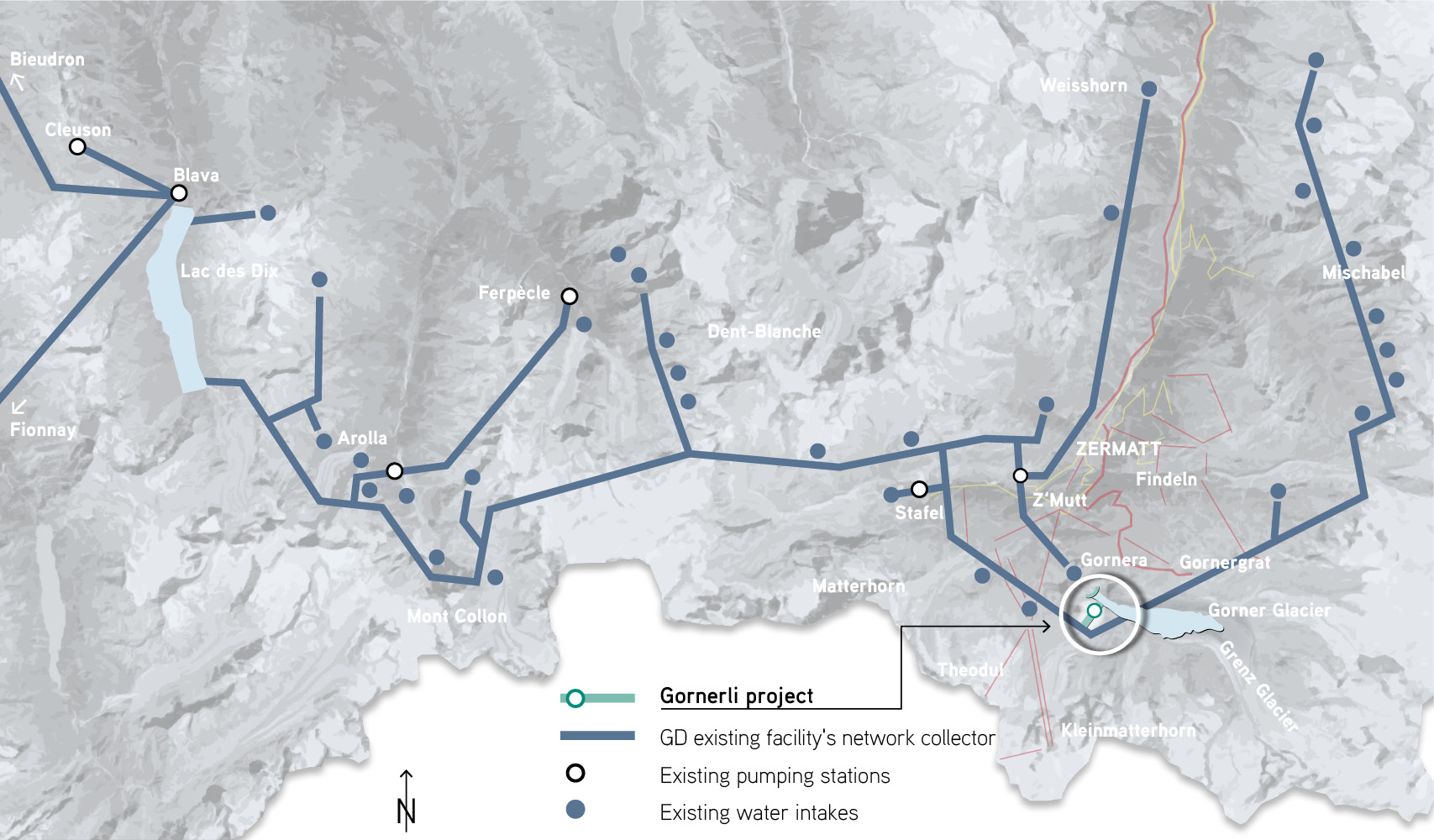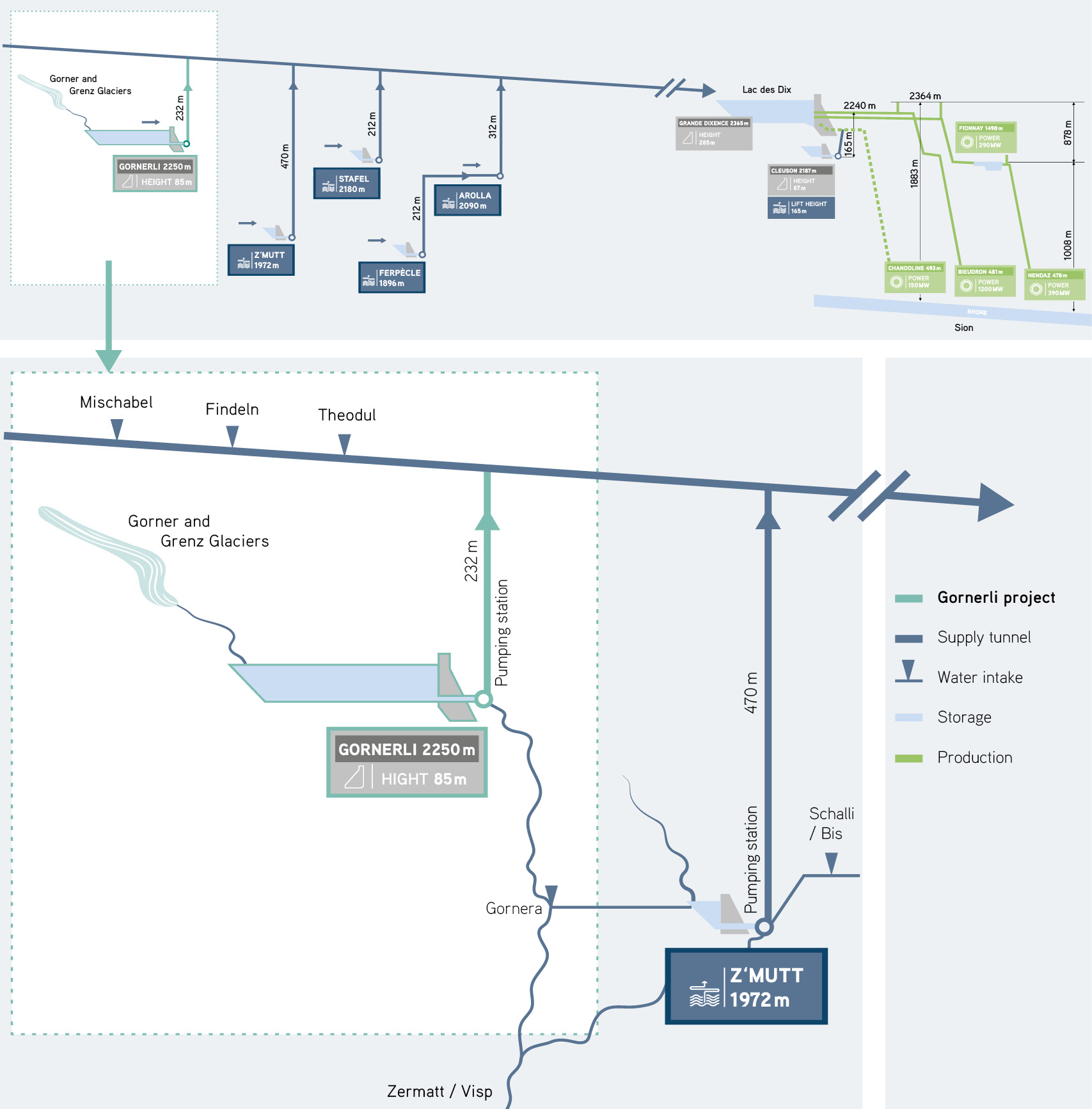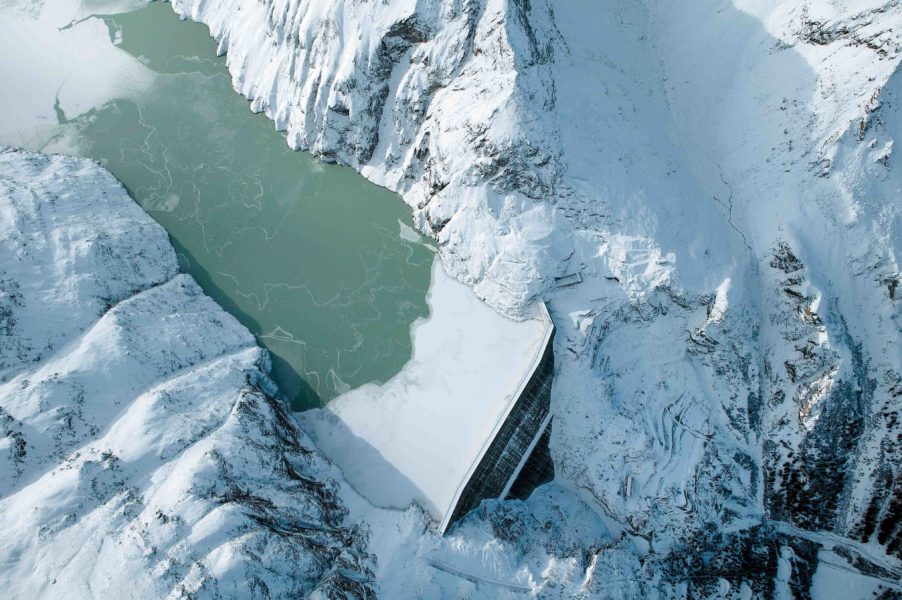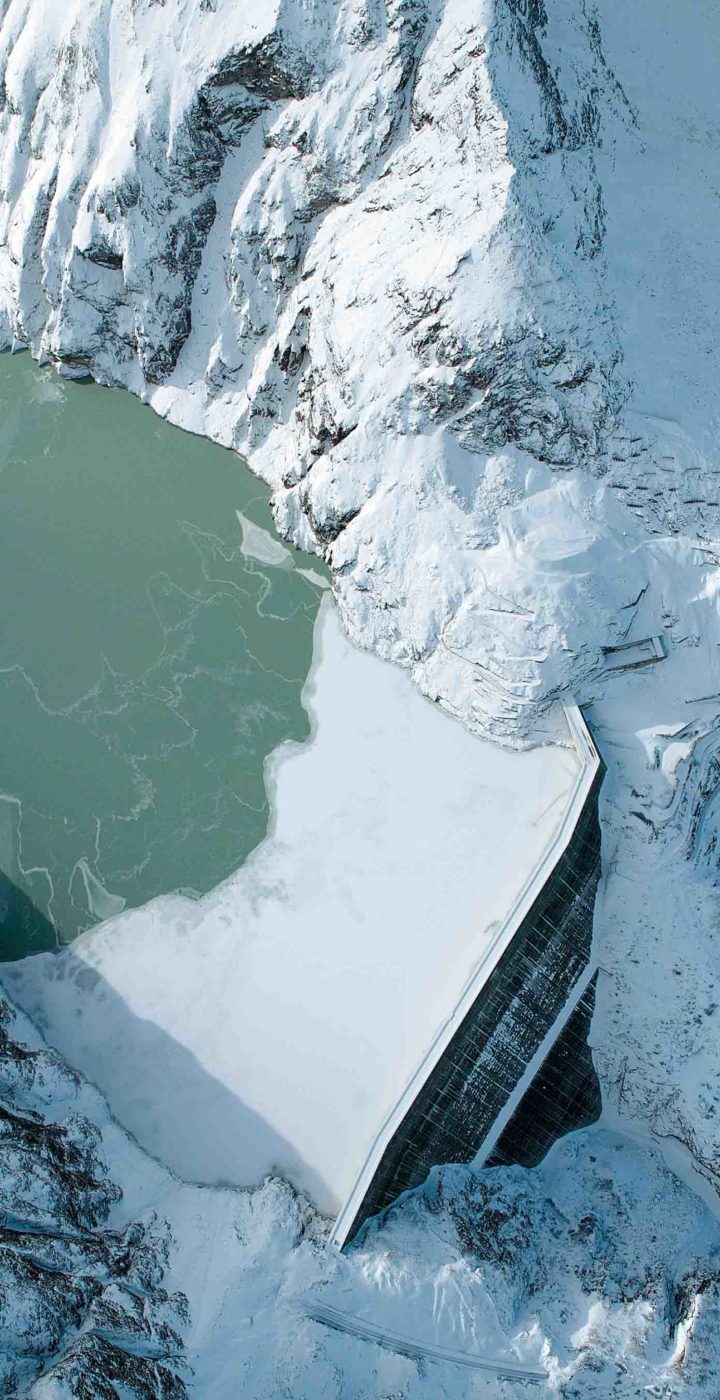BACKGROUND: HYDROPOWER ROUND TABLE
One aspect of the Swiss Federal Government’s Energy Strategy 2050 is the expansion of renewable energies. As such, representatives of key players in the field of hydropower held a round table from August 2020 onwards to discuss the challenges of hydropower, the net-zero climate target, security of supply and the preservation of biodiversity. A final declaration selected 16 projects of national interest and set out compensation measures and general recommendations to protect biodiversity and the landscape. The most important and largest project on this list is the Gornerli multi-purpose reservoir. This project alone could provide around one third of the additional winter electricity production of all the projects of the Hydropower Round Table.
EMBEDDING IN THE GRANDE DIXENCE
Today, the water from the Gornera is fed directly to the Z’Mutt pumping station (pumping height 470 m) and pumped up. The Gornera water is to be dammed behind the Gornerli dam, channelled into the existing tunnel system via an underground pumping station at a higher altitude (pumping height 232 m) and treated using the existing Grande Dixence facilities. Damming the Gornera contributes to winter production. The lower head also saves around half of the pump energy and uses additional peak outflows in summer.


USEFUL VOLUME OF THE RESERVOIR
One of the challenges is estimating the future useful volume, which depends on various factors, such as the definitive topology (lakebed), the speed of glacier retreat and future inflows. External experts (including ETH Zurich) and targeted test boreholes on site will investigate these factors as part of the construction project planning for 2024/25. Those responsible for the Gornerli multi-purpose reservoir currently expect a maximum useful volume of 150,000,000 m3, as soon as the glacier retreats completely from the lake perimeter (2045 to 2060).
CONSTRUCTION AND LOGISTICS
The construction work includes the construction of the dam wall and the underground pumping station. The constructor currently expects the dam wall to be around 85 metres high. The construction project planning for 2024/2025 will finalise the dimensions, which depend on the ongoing geological and hydrological investigations, as well as other factors.
The construction work will be planned in such a way as to minimise the negative impact on the commune of Zermatt and the environment. The remote location of the dam poses a particular challenge in terms of project logistics. The focus is on finding a solution using existing public transport (MGB [Matterhorn Gotthard Railway]/GGB [Gornergrat Railway]) to the Findelbach station and a cableway to the building site. Heavy transport through the village is kept to a minimum but cannot be ruled out.
PROCEDURAL STEPS AND SCHEDULE
- 2021 : Inclusion of the project in the Hydropower Round Table
- 2023 : Technical preliminary project and preliminary investigation of the environment
- 2023 : Inclusion of the project in the cantonal structure plan by the Cantonal Council of Valais
- 2024 : Scheduling of the project in the cantonal structure plan by the Swiss Federal Government
- Since 2024 : Statutory regulation of the implementation of compensation measures of the Hydropower Round Table
- Since 2024 : Preparation and negotiation of concession addition and residual value compensation with the concession grantors
- Since 2024 : Participatory approach with interest groups as part of the environmental support group
- Since 2024 : Development of construction project and environmental impact assessment (EIA)
The completion of the preliminary procedure in accordance with Article 13 of the Cantonal Water Rights Act, the submission of the project dossier and the granting of the concession addition by the concession communes are dependent on the ongoing procedural steps (see above). Depending on these procedural steps, the subsequent cantonal approval procedure, any objections and complaints, the Swiss Federal Government’s approval of funding and the final building decision by the constructor, construction will start and the facility will be commissioned five years later at the earliest. Right now, commissioning between 2030 and 2035 is realistic, although the progress of the project is heavily influenced by external matters.
CURRENT PROJECT WORK
Grand Dixence drilled extensive test boreholes as part of the preliminary project for the Gornerli. The results confirmed the findings of the preliminary geological investigations: overall, the geology suits the construction of a new dam.
Further investigations are currently underway in order to plan the project and achieve the desired objectives in the best way possible. The focus here is on the topics of geology, hydrology, glacial lake, lake formation, dam, pumping station, logistics, and environmental and landscape protection. The findings will be incorporated into the environmental impact assessment (EIA) and the construction project. Secondly, they provide information on the necessary substitute and compensation measures.
CONSTRUCTOR
The developer and investor of the Gornerli project is Grande Dixence SA. Ongoing project planning is carried out in collaboration with the main shareholder Alpiq and various other external companies. The project is being developed and implemented together with the commune of Zermatt. The other 20 concession communes of the Grande Dixence are closely involved in the project. Grande Dixence is owned by Alpiq Suisse SA (60%), Axpo Power AG, BKW Energie AG and IWB (13.3% each).
FACTS AND FIGURES
- Catchment area: Monte Rosa area with the Gorner and Grenz glaciers
- Body of water: utilisation of the already captured Gornera
- Protection zone: ILNM object 1707 Dent Blanche – Matterhorn – Monte-Rosa
- Dam: arch dam, height approx. 85 m, length approx. 245 m
- Location of dam: gorge between Gorner Glacier and Furi (below Gagenhaupt)
- Useful volume: max. 150,000,000 m3
- Concrete volume: approx. 180,000 m3
- Underground pumping station: three pumps, pump height from 200 to 265 m
- Power plant: integration in the existing Grande Dixence power plant system
- Additional winter electricity: max. 650 million kWh per year
- Additional power production: approx. 200 million kWh per year
- Investment costs: approx. CHF 300 million
- Commissioning: between 2030 and 2035, depending on various external factors


